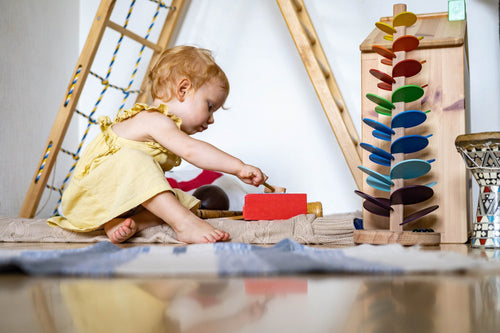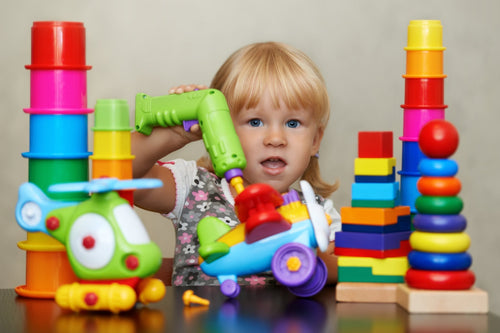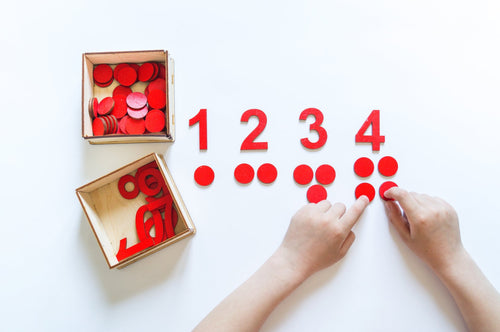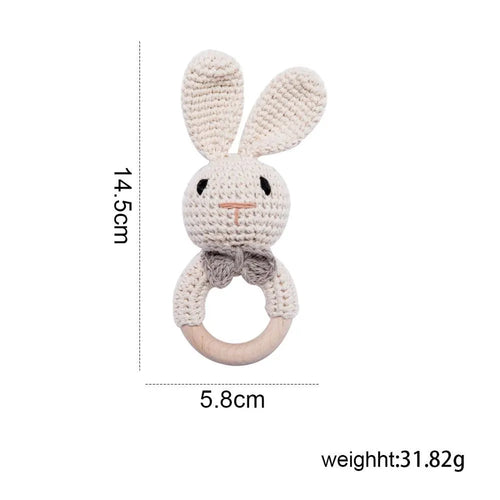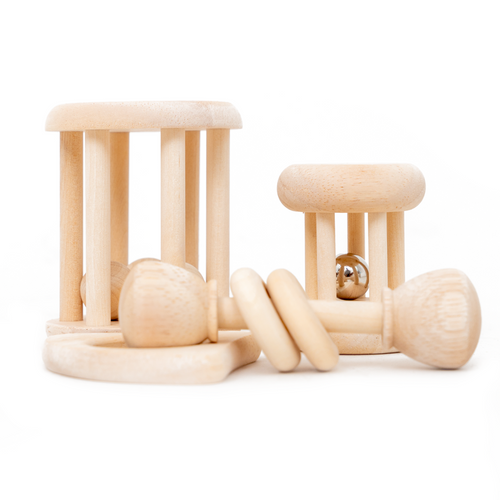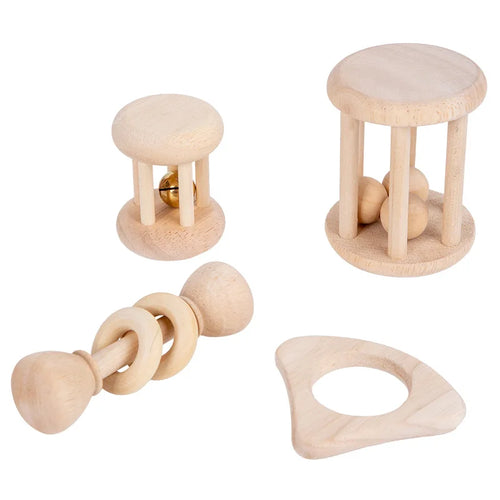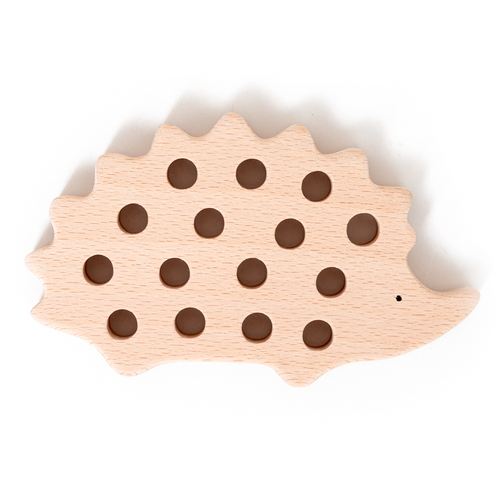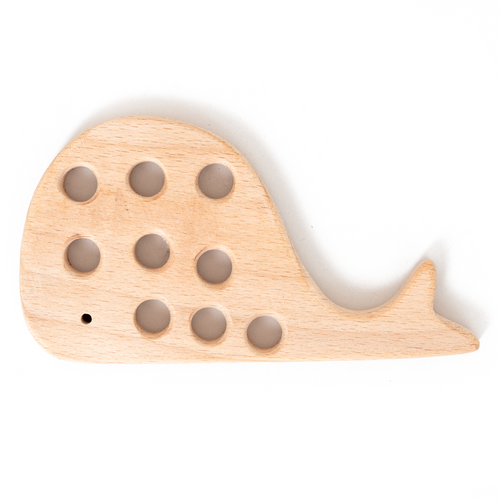Quick picks:
- Explore: texture tiles (rough→smooth), fabric swatches, mystery bag with 4–6 objects.
- Match/grade: sandpaper tablets; “soft–medium–firm” sponge kit; temperature pairs (warm/cool bottles).
- Regulate: soft putty squeeze ×20; stress ball; velvet swatch + slow breath card.
- Fine motor: tweezers transfer (pompoms→beads); geoboard bands; lacing cards with different cords.
What are tactile sensory toys—and what makes them different from “fidget toys”?
Direct answer: Tactile toys target the somatosensory system—touch receptors in skin and joints that detect pressure, vibration, texture, and temperature. They’re designed to deliver specific, repeatable input (rough vs. smooth; soft vs. firm) and usually have a clear learning goal (match, grade, describe, or regulate). Fidgets are a subset; they can be helpful regulation tools, but many lack structured goals. For development, choose toys that invite focused hands-on work rather than constant, unfocused motion.
In Montessori-inspired practice, tactile work is presented on a tray with a single intent: “Match the textures,” “Grade sandpaper rough→smooth,” or “Squeeze putty 20 times.” You model once, then step back—letting repetition do the learning.
Sources (section): AMI/AMS—Sensorial area primers montessori-ami.org • amshq.org; NICHD—Early learning & sensory foundations nichd.nih.gov.
How does texture exploration build the brain?
Direct answer: Every grasp, press, and slide across a texture activates skin and joint receptors. Those signals are mapped in the brain’s sensory cortex; repeated, patterned touch sharpens the map, which improves discrimination (telling surfaces apart), motor planning (how much force, what grip), and prediction (what will happen if I press harder?). These skills transfer to utensil use, drawing, writing, buttoning, and safe exploration of new environments.
Texture language (“bumpy shell,” “silky ribbon”) also sticks better when it’s tied to real sensations. Pair hands-on exploration with precise words and short pauses for your child to respond. The combination—touch + language—creates robust memory traces that later support reading comprehension and science learning.
Sources (section): Harvard Center on the Developing Child—experience builds brain architecture developingchild.harvard.edu; CDC—Milestones & hand skills cdc.gov.
Which tactile toys teach discrimination (tell the difference) vs grading (order by degree)?
Direct answer: Use pairs to train discrimination (“same/different”), and a series to train grading (“least→most”). This mirrors classic Montessori sensorial progression.
| Goal | Try This (1 Tray) | Why It Works | Scale Up |
|---|---|---|---|
| Discrimination | Texture pairs (rough vs. smooth; bumpy vs. silky) | Same/different is the simplest perceptual decision; builds confidence. | Add a blindfold/mystery bag to engage pure touch. |
| Grading | Sandpaper tablets #1–#6 (smooth→rough) | Orders by intensity; teaches comparison and vocabulary (“rougher”). | Increase to 8–10 steps; time their build for focus. |
| Force grading | Soft/medium/firm sponges | Trains how much pressure to use—key for writing & cutting. | Progress to clothespins with varying resistance. |
Sources (section): AMI/AMS—Sensorial materials (grading & pairing) montessori-ami.org • amshq.org.
How do tactile toys support fine motor strength and precision?
Direct answer: The fingertips learn to “read” tiny differences through repeated contact. As discrimination improves, kids naturally use more efficient grips, stabilize the wrist, and grade force better. Activities that combine touch + tiny movements (tweezers transfer, geoboard bands, lacing cards with varied cords) are especially powerful.
- Start: whole-hand squeeze (soft putty), palm-to-palm transfer of large pompoms.
- Build: pincer posting (coins→beads), clothespin clip matching to texture cards.
- Refine: geoboard patterns; tweezers transfer into tiny cups; nut-and-bolt matching by feel.
Sources (section): CDC—fine motor milestones & practice cdc.gov; HealthyChildren (AAP)—hand skills & play healthychildren.org.
Can touch help self-regulation? (Yes—when you choose the right input.)
Direct answer: Slow, predictable tactile input—press, squeeze, stroke—can downshift the stress response and bring kids back to a calm-alert state. Many children find rhythmic squeezes of soft putty, velvet swatch + breathing, or “heavy work” with firm resistance helpful before seated tasks. Others benefit from a contrasting pair (cool → warm bottle) to “reset” attention quickly.
Build a tiny calm kit: soft putty, velvet/satin square, liquid timer, picture breath card. Rehearse the routine after snack; when stress hits, use the same sequence for 2–3 minutes.
Sources (section): NICHD—self-regulation research overview nichd.nih.gov; HealthyChildren—coping & calming skills for families healthychildren.org.
Age-by-age ideas: tactile trays that grow with your child
0–12 months (with caregiver)
- Texture book (smooth/satin/corduroy); soft washcloth squeeze in warm water; hand-to-foot “massage” rhyme.
12–24 months
- Rice → pompoms scoop; fabric basket (velvet/denim/fleece); simple sand tray finger lines.
2–3 years
- Sandpaper tablets #1–#4; soft/medium sponges; putty press coins; object↔picture texture match.
3–6 years
- Grading #1–#8; geoboard bands; tweezers transfer beads; mystery bag identify 5 items by feel with eyes closed.
Sources (section): CDC—developmental readiness; AMS—Sensorial sequence by age amshq.org.
DIY & budget builds (parent-tested, classroom-approved)
Direct answer: You don’t need fancy gear. Quality tactile input comes from everyday materials if you isolate one goal and make it repeatable.
- Texture cards: glue denim, felt, bubble wrap, foil, and sandpaper onto index cards; make 2 sets for matching.
- Firm/soft force kit: 3 kitchen sponges cut to equal size; label S/M/F for grading press.
- Mystery bag: cotton bag + 6 small household objects; child identifies by feel only.
- Temperature pair: two leak-proof bottles (warm water / cool water) for “which is warmer?” checks.
- Calm kit: soft putty in tin; velvet square; small liquid timer; breath card laminated.
Sources (section): HealthyChildren—toy safety and choking guidance healthychildren.org; CPSC—toy safety center cpsc.gov.
Presentation matters: how to teach tactile work so it “sticks”
Direct answer: Keep it short, slow, and visual. Place all materials on one tray at child height. Model once in silence, then invite: “Your turn.” Step back. When they finish, model reset (brush crumbs into bin, return cards, wipe tray). End on success, not exhaustion.
- One variable at a time: change only texture or size, not both.
- Language after touch: let hands explore first, then add vocabulary (“smooth,” “rougher”).
- Rotate weekly: keep two trays visible; swap on Fridays to protect novelty without overload.
Sources (section): AMS—Montessori presentation principles & control of error amshq.org; NICHD—repetition & experience-dependent learning nichd.nih.gov.
For neurodivergent learners (autism, ADHD, tactile defensiveness)
Direct answer: Many autistic and ADHD learners benefit from predictable, low-clutter tactile input with clear start/finish. For tactile defensiveness, start with preferred textures (velvet, soft cloth) and build tolerance slowly—touch with a tool first (brush/spoon), then fingertip, then full hand over days or weeks. Pair with rhythm and breathing. Never force touch; consent and choice are part of regulation.
Document the routine in an IEP/504: location, tools, duration (2–5 minutes), return cue, who prompts, and data to track (return-to-task time, prompts needed). Weighted items must be supervised; use size-appropriate products and avoid during sleep.
Sources (section): AAP—Sensory Integration Therapies (family summary) healthychildren.org; AAP—weighted items safety healthychildren.org.
How to measure impact (so you know it’s doing something)
Direct answer: Track visible behaviors weekly: time on task before first redirect, spills during transfers, descriptive words used during play/reading, willingness to touch new textures, and recovery time after upsets. Take one quick photo of the tray at start and finish to celebrate independence.
In classrooms, log a 1–5 “tactile tolerance” rating and “prompts to reset” count. Revise trays if progress stalls for two weeks—swap in a new texture or reduce the challenge (bigger items, fewer pieces) to rebuild momentum.
Sources (section): CDC—screening/observation basics cdc.gov; AMS—observation & prepared environment amshq.org.
Related TinyLearns guides
- The Benefits of Sensory Play
- Sensory Play at Home: DIY Setups
- Sensory Breaks Explained
- How Sensory Toys Help Autism & Overload Relief
FAQ: Tactile sensory toys
Are messy materials required?
No. Many tactile benefits come from dry, tidy materials (fabric cards, sandpaper tablets, geoboard). If you do messy play, contain it in a tray and teach the reset.
How many textures should I offer at once?
Two for discrimination; three to six for grading. More choices often reduce focus. Rotate weekly rather than crowding the shelf.
What if my child avoids certain textures?
Respect the “no.” Start with preferred textures, add tools (brush/spoon) to reduce direct contact, and increase exposure gradually with choice and control.
Any safety red flags?
Follow choking-size rules for under-3s; supervise magnets and small parts; avoid strong scents/dyes for sensitive kids; check CPSC and AAP tips linked below.
Sources & further reading
- Association Montessori Internationale — Sensorial materials & philosophy: https://montessori-ami.org/resource-library
- American Montessori Society — Sensorial overview & observation: https://amshq.org
- NIH / NICHD — Early Learning & Development: https://www.nichd.nih.gov/health/topics/early-learning
- Harvard Center on the Developing Child — Brain Architecture: https://developingchild.harvard.edu/science/key-concepts/brain-architecture/
- CDC — Developmental Milestones & Screening: https://www.cdc.gov/ncbddd/childdevelopment/index.html
- HealthyChildren (AAP) — Toy Safety Tips: https://www.healthychildren.org/English/safety-prevention/at-home/Pages/Toy-Safety-Tips.aspx
- HealthyChildren (AAP) — Weighted Items Safety & Cautions: https://www.healthychildren.org/English/health-issues/conditions/chest-lung/Pages/Weighted-Blankets-and-Other-Items-What-Parents-Need-to-Know.aspx
- U.S. Consumer Product Safety Commission — Toy Safety Center: https://www.cpsc.gov/Safety-Education/Safety-Education-Centers/Toy-Safety








